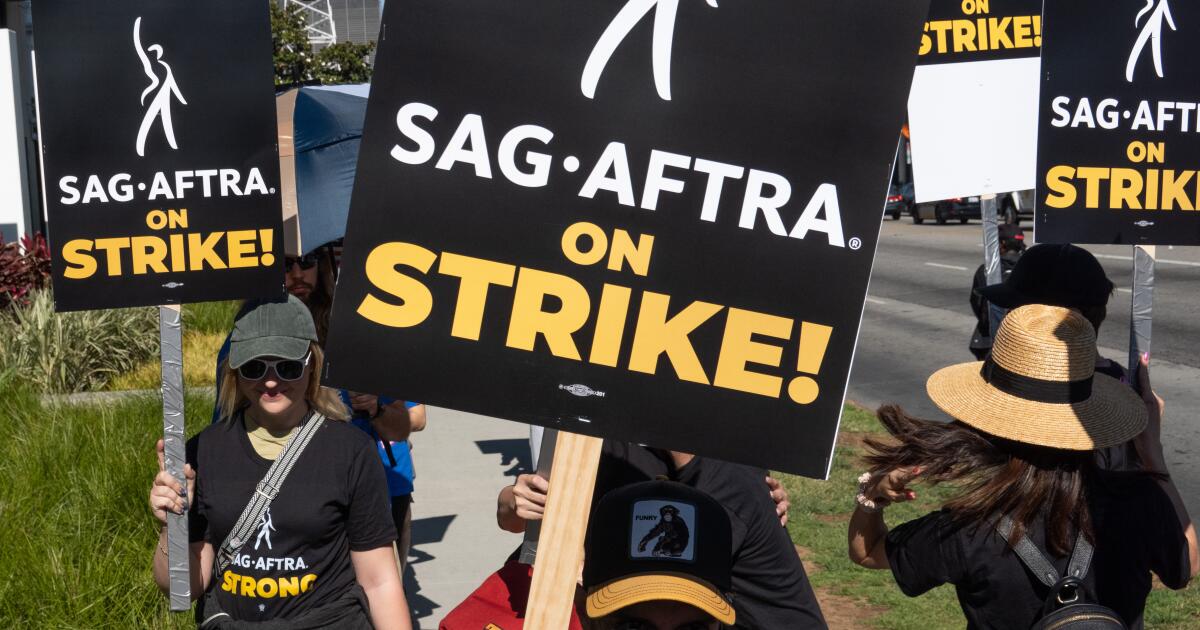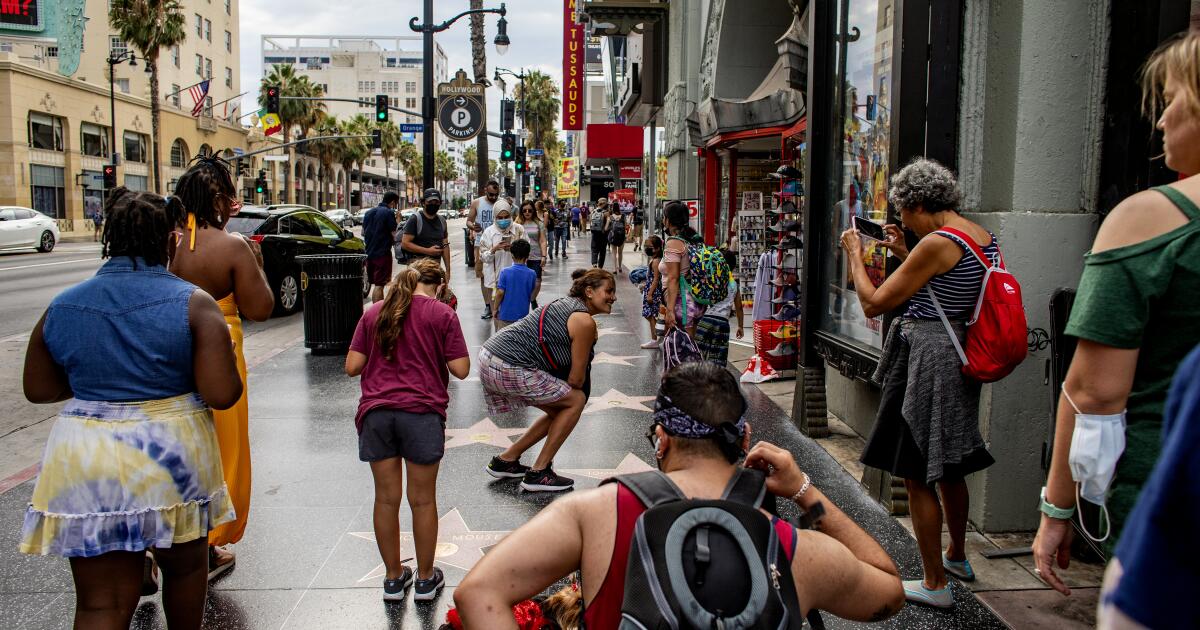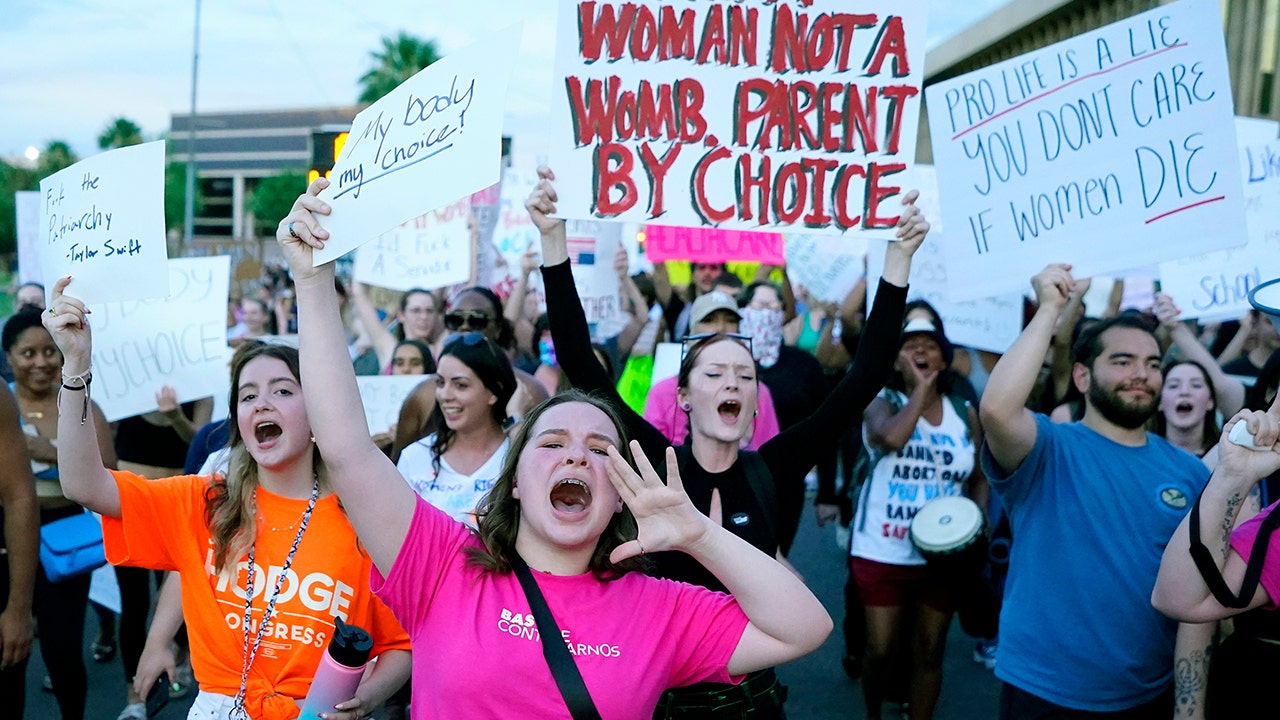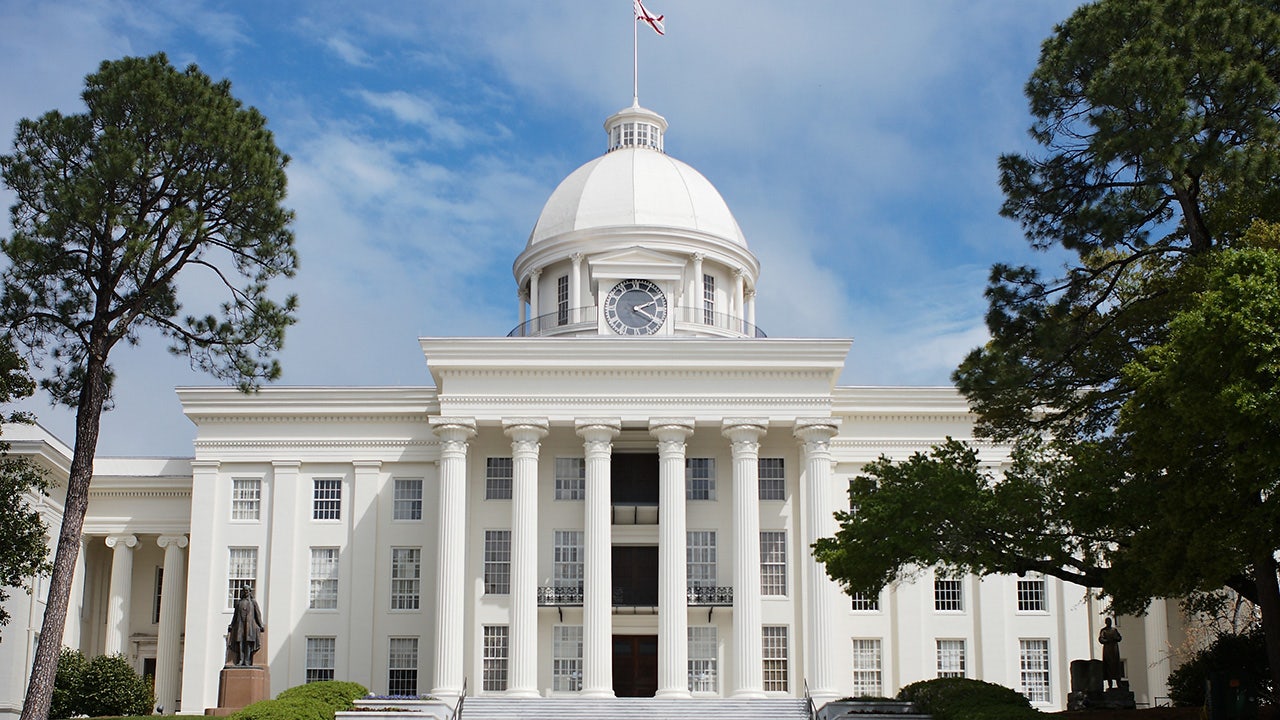Business
In scramble to protect workers against heat, California officials exclude prisons from new rules

After last-minute objections from state officials thwarted plans to implement protections for workers in hot warehouses and other indoor facilities, California’s workplace safety agency is trying again to adopt the measures before the summer heat arrives.
At a March 21 meeting, the state board overseeing workplace safety standards was primed to approve the landmark regulations. Shortly before the start of the meeting, however, officials from the state’s Finance Department, which must sign off on new workplace rules, intervened. They raised concerns about the costs that California prisons and other public entities would incur trying to adhere to the new rules, saying the price tag for cooling correctional facilities could run “in the neighborhood of billions of dollars.”
Now, California’s Division of Occupational Safety and Health, or Cal/OSHA, said it will revise the proposed indoor heat rule to exclude state and local correctional facilities — an amendment that would appear to clear a path for approval of the rules in coming weeks.
H.D. Palmer, a spokesman for the Department of Finance, indicated the department supported the move.
“I don’t want to get ahead of our staff’s review, but given that it excludes correctional facilities, it would appear to address the issues that we had,” he said.
The announcement that correctional facilities will be carved out from the rule was made by the agency’s standards board Thursday and came amid considerable pressure from labor groups to get protections in place for their members.
“We are hopeful this will create a path for protections this summer but will not stop advocating until it is accomplished,” said Lorena Gonzalez, head of the California Labor Federation.
The federation and scores of regional unions and other workers groups sent a letter to Gov. Gavin Newsom on April 1 urging him to “act immediately” to approve the rule.
“With the swipe of a pen, the State of California can easily prevent workplace injuries and deaths brought on by indoor heat,” the letter read. “Summer is coming, and time is a luxury that workers cannot afford.”
Under the proposed indoor heat rule, employers would have to provide cooling areas and monitor workers taking breaks to cool down for signs of heat illness when temperatures inside reach or surpass 82 degrees.
If temperatures climb to 87 degrees, or workers are made to work near hot equipment, employers would be mandated to take additional safety precautions to either cool the broader work site, allocate more breaks, rotate out workers or make other adjustments.
After the board’s aborted vote, the state blew past a procedural deadline to get sign-off from the Finance Department, leaving supporters of the new rules to worry that the approval process would have to start from scratch.
But Eric Berg, a Cal/OSHA deputy chief, said Thursday the agency had found a way to extend the deadline, giving it the time it needed to revise the rules to exempt prisons.
It is expected to take several weeks for the revised rules to be formally approved, Berg said.
He added that Cal/OSHA plans to propose separate rules that would spell out heat safety measures for workers in jails and prisons. Those rules must go through the lengthy approval process from the start, which could take months or years.
Gonzalez, of the California Labor Federation, said unions for workers at correctional facilities are working with the governor’s office to craft a proposal. She said public sector unions may look to implement safety rules earlier, through collective bargaining agreements.
The original indoor heat rule is nearly eight years in the making, stemming from a 2016 mandate by the California Legislature directing Cal/OSHA to develop heat safety regulations.
The need for indoor guidelines has become increasingly urgent as climate change makes heat waves and high temperatures more frequent and severe, experts say. Some warehouses, shipping centers, kitchens, schools and other workplaces can soar above 90 degrees.
“We need these regulations to be in place before the summer,” said Laura Stock, a board member reached by phone last month. “As we heard from the testimony of all the workers and organizations that were there, people are suffering from the impact of heat illness.”

Business
Byron Allen's Allen Media Group facing layoffs across all divisions of the company

Allen Media Group, the company owned by TV mogul Byron Allen, is set to undergo a significant round of layoffs that will affect all divisions of the business.
“Allen Media Group is making strategic changes to better position the company for growth that will result in expense and workforce reductions across all divisions of the company,” a spokesperson said Thursday in a statement to The Times.
“Allen Media Group’s brands continue to perform well and in many areas our revenue growth has greatly outpaced the market. We are aligning these changes to drive future business opportunities and support our growth strategies in our rapidly evolving industry.”
The company did not say how many jobs would be cut.
Allen Media Group is the parent company of the Weather Channel and a number of local TV stations.
The stand-up comedian and TV producer has been making lots of headlines lately amid reports that he was among the entertainment executives looking to acquire Paramount Global.
Earlier this year, Allen made a $14.3-billion bid to purchase all of the outstanding shares of the New York City-based entertainment company — home of Paramount Pictures, CBS and other legacy brands and franchises.
But analysts and investors were skeptical of Allen’s bid for Paramount, questioning whether he’d be able to raise the funding necessary to pull off a deal.
This is a developing story.
Business
SAG-AFTRA taps Nielsen for streaming data to enforce new contract

SAG-AFTRA has tapped audience measurement company Nielsen to provide streaming data that will inform how the performers union enforces certain terms of its new contract with the top studios.
Nielsen announced Thursday that it will function as the official third-party provider of streaming viewership numbers for the Screen Actors Guild-American Federation of Television and Radio Artists. The Nielsen data is expected to complement additional viewership info supplied by the streaming giants themselves.
“New business models require new tools, and that’s why we’ve enlisted Nielsen,” said Duncan Crabtree-Ireland, chief negotiator and national executive director of SAG-AFTRA. “The information they provide will give us the means to cross-check the data streamers give us and ensure employers are fulfilling their contractual obligations to our members.”
The partnership comes several months after SAG-AFTRA reached a deal with the major studios and streamers to end the 118-day actors’ strike. As part of that three-year pact, the streaming companies have agreed to share viewership numbers with the guild.
SAG-AFTRA intends to use the data to qualify for bonuses performers employed on hit movies and TV shows streaming on Netflix, Max, Amazon’s Prime Video and other platforms. Per the contract, actors are entitled to a bonus (in addition to residuals) if their program is viewed by at least 20% of the streaming service’s domestic subscribers within the first 90 days of its release.
Twenty-five percent of the bonus pool will go to a newly created streaming payment distribution fund, which will fund streaming bonuses for additional performers.
“The rapid evolution of the media landscape and audience behaviors over the past decade has not only affected how content is consumed and measured but also greatly impacts the financial models on which the entertainment industry operates,” said Karthik Rao, chief executive of Nielsen.
Business
A slice of tourists hasn't returned since COVID. L.A. wants them back.

Before the pandemic, a steady stream of buses ferrying tourists from Brazil, China, Australia and elsewhere pulled into the Original Farmers Market every day. They typically idled for an hour or so, while their passengers ate and shopped for souvenirs at the historic collection of food stalls and kitschy shops in the heart of Los Angeles.
The buses still come these days. But, if the city’s overall tourism figures are any indication, the number of international travelers isn’t what it used to be.
Adam Burke is looking to fix that.
As president and chief executive of the Los Angeles Tourism & Convention Board, Burke has watched the city rebound after the dark days of COVID-19 to reassert itself as one of the country’s most popular travel destinations. The recovery, however, is incomplete as visits from international travelers remain well below pre-pandemic levels.
Boosting those visits, Burke says, is crucial to the overall strength of L.A.’s tourism industry, which brought in nearly $22 billion in 2022 and has more than 530,000 people working in tourism-related careers, according to city statistics. Foreign travelers tend to stay longer and spend more.
“It’s impossible to overstate how critically important international visitation is to L.A.,” Burke said, adding that the spending power of one international traveler is equal to three domestic visitors.
A pit stop at the farmers market is one of the many offerings that local officials, hotel executives and others from the L.A. tourism industry will be pitching to representatives from hundreds of international travel-related companies at an annual conference at L.A.’s convention center this week.
They’re hoping the conference provides an additional boost to the number of visits from abroad. While the volume of domestic visitors to L.A. has recovered to pre-pandemic levels, the 5.8 million international visitors L.A. received last year represents only about three-quarters of the total who came in 2019, according to figures from the tourism board.
The conference marks the starting point of a broader campaign by the tourism board, which has plans to use money from a federal grant to bolster marketing and branding targeting international travelers.
The push to regain foreign visitors in Los Angeles is reflected in national tourism statistics. Before the pandemic hit, the amount that visitors to the U.S. spent in the country outpaced the total American travelers spent abroad, giving the country a so-called travel trade surplus. Beginning in the summer of 2021, however, that balance has shifted as international travel to the U.S. has slipped, according to the U.S. International Trade Administration.
In California, as elsewhere, the slowdown in international tourism has been driven largely by the flagging number of visitors from China and other Asian countries, industry experts said.
Although the more than 75 million departures and arrivals at LAX in 2023 marked a nearly 14% jump in volume from the previous year, the total was still about 15% below the airport’s traffic in 2019, according to Dae Levine, a spokesperson for Los Angeles World Airports.
“The gap we are looking to make up is flights to and from China,” Levine said.
Chilly relations between the U.S. and China, as well as restrictions to Russian airspace that interfere with flight routes, have meant that the number of flights arriving from China has remained low despite the end of the lockdown.
A lunch crowd gathers at Phil’s Deli & Grill, inside the Original Farmers Market in Los Angeles, in 2022.
(Jay L. Clendenin / Los Angeles Times)
The number of flights has been climbing gradually over the past year. Since the end of March, U.S. transportation officials have allowed Chinese airlines to increase the number of round-trip flights into the country each week from 35 to 50, which is nearly a third of pre-pandemic levels.
Tourism officials in L.A. are encouraged by the upcoming conference, where China is expected to send one of the largest delegations .
The slow pace of processing visa applications has further dissuaded travelers, said Geoff Freeman, president of the U.S. Travel Assn. In India, would-be tourists typically must wait more than a year for an interview at the U.S. Embassy or a consulate that is a part of the visa application, and in Colombia the wait can stretch to nearly two years, he said.
“As you can imagine, if someone told you there was a 700-day wait, you would say, ‘I’m going to go somewhere else,’” Freeman said.
Burke, who serves as a member of the U.S. Department of Commerce’s Travel and Tourism Advisory Board, is among those pushing the White House to ease travel restrictions, address visa backlogs and boost flight volumes.
In some ways, L.A. as a tourist destination is a difficult sell, said Jan Brueckner, an economics professor at UC Irvine.
“L.A. is not such a great city for getting around,” Brueckner said. “In L.A., to get around you really need a rental car and that’s a factor that makes things more expensive, and people may encounter our famous traffic congestion, which is not pleasant.”
And while major events scheduled to be held in L.A. in the next few years — including the World Cup in 2026 and the Summer Olympics in 2028 — will draw huge numbers of visitors from abroad, they are not without their complications and risks.
For example, efforts to resolve long-running labor disputes at dozens of L.A.-area hotels have made progress in recent months, but new contracts signed by workers are set to expire in early 2028, leaving open the possibility of labor unrest at hotels just before the Olympics.
Old hands in the tourism trade are used to that kind of uncertainty.
“You have to be prepared for anything. We could have earthquakes, riots and unrest,” said Scott Bennett, owner of Bennett’s Ice Cream, a mainstay at the Farmers Market for more than 60 years.
He recalled how during the COVID-19 lockdowns, tables and chairs were removed from the market’s patio and he had to let the shop’s 12 employees go. Instead of serving cones to customers, the store survived by Bennett selling hand-scooped pints for takeout.
Now, staffing is back, as are sales, said Bennett, who is looking forward to a hot summer. “When it’s hot, people want ice cream.”
Burke from the tourism board, meanwhile, is hoping Bennett will hear a few more foreign languages being spoken among customers waiting in line.
“They are the golden goose of the industry,” he said of foreign tourists.
-

 News1 week ago
News1 week agoLarry Webb’s deathbed confession solves 2000 cold case murder of Susan and Natasha Carter, 10, whose remains were found hours after he died
-

 World1 week ago
World1 week agoHaiti Prime Minister Ariel Henry resigns, transitional council takes power
-

 News1 week ago
News1 week agoFirst cargo ship passes through new channel since Baltimore bridge collapse
-

 World1 week ago
World1 week agoUS secretly sent long-range ATACMS weapons to Ukraine
-

 World1 week ago
World1 week agoSpanish PM Pedro Sanchez suspends public duties to 'reflect'
-

 News1 week ago
News1 week agoAmerican Airlines passenger alleges discrimination over use of first-class restroom
-

 World1 week ago
World1 week agoAsia bears biggest climate-change brunt amid extreme weather: WMO
-

 Movie Reviews1 week ago
Movie Reviews1 week agoHumane (2024) – Movie Review






/cdn.vox-cdn.com/uploads/chorus_asset/file/24347780/STK095_Microsoft_04.jpg)









